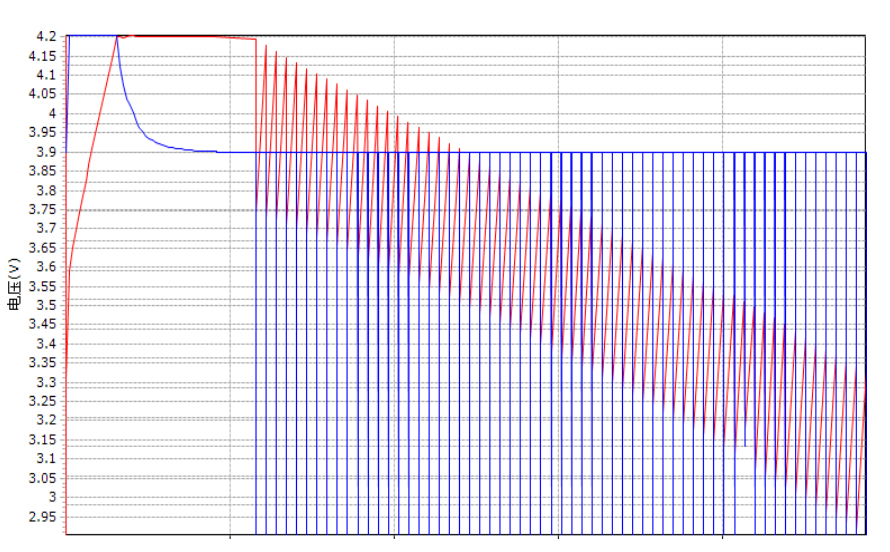Consulting phone:
135-3037-2041
(Mr.Wang)
Product Introduction:
Graphene starting capacitor module, as a new type of energy storage device, can be assembled into two series, three series, four series, five six and other energy storage modules using 4.2V38000F monomer. It has the advantages of high power density, high electrostatic capacity, and relatively long cycle life, and is expected to be widely used in new energy vehicles, solar energy, wind energy, and other fields. Its working principle is different from lithium-ion batteries and supercapacitors. Advantages of lithium-ion capacitors compared to lithium-ion batteries and supercapacitors
Main parameters:
Number | characteristic | numerical value |
1 | Rated capacity | 38000F/18Ah ± 5% (or customized) |
2 | Upper limit voltage | 4.2V (or customized) |
3 | Lower limit voltage | 2.5V (or customized) |
4 | DC internal resistance (10ms) | ≤ 0.6m Ω (or customized) |
5 | Standard charging current | 54A (3C) (or customized) |
6 | Fast charging current | 180A (10C) (or customized) |
7 | Rated discharge current | 54A (3C) (or customized) |
8 | Continuous discharge current | 540A (30C) (or customized) |
9 | Discharge duration | 120S (or customized) |
10 | temperature rise | 50 ± 5 ℃ (or customized) |
11 | Security | Refer to GB/T 31485-2015 for electric vehicles Safety requirements and test methods for power batteries |
12 | Temperature range of charge and discharge | -40~85℃ |
13 | Storage temperature range | -40~55℃ |
14 | Fast charging cycle life (@ 25 ± 2 ℃, forced heat dissipation) | ≥ 30000 times (10C) (or customized) |
15 | Slow charging cycle life | ≥ 50000 times (1C) (or customized) |
16 | weight | ≤ 800g (or customized) |
17 | Size (diameter D) × Height H) | Φ 60mm × 140mm (or customized) |
Product Display:
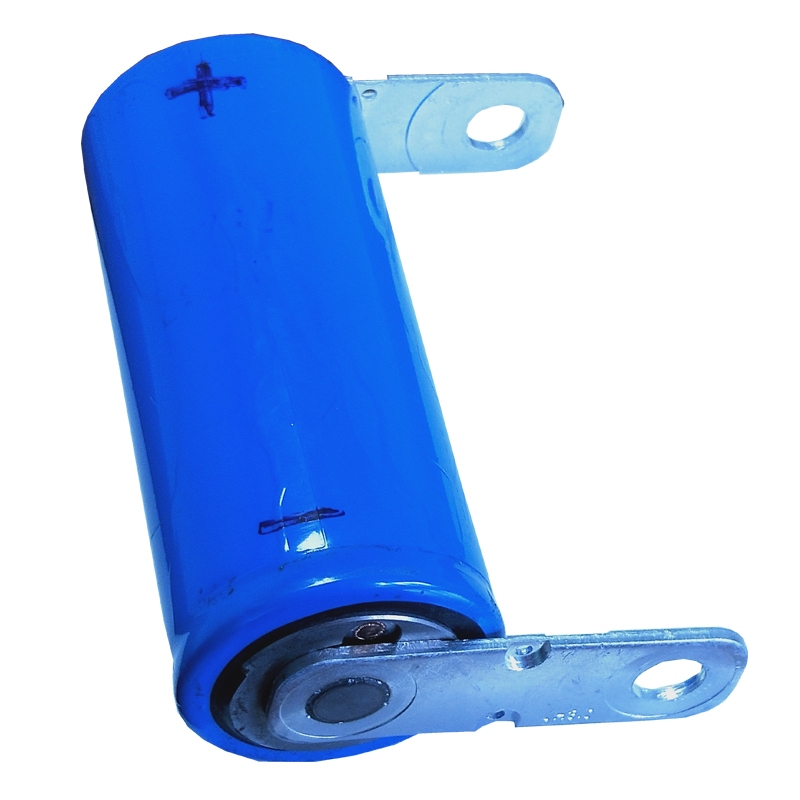
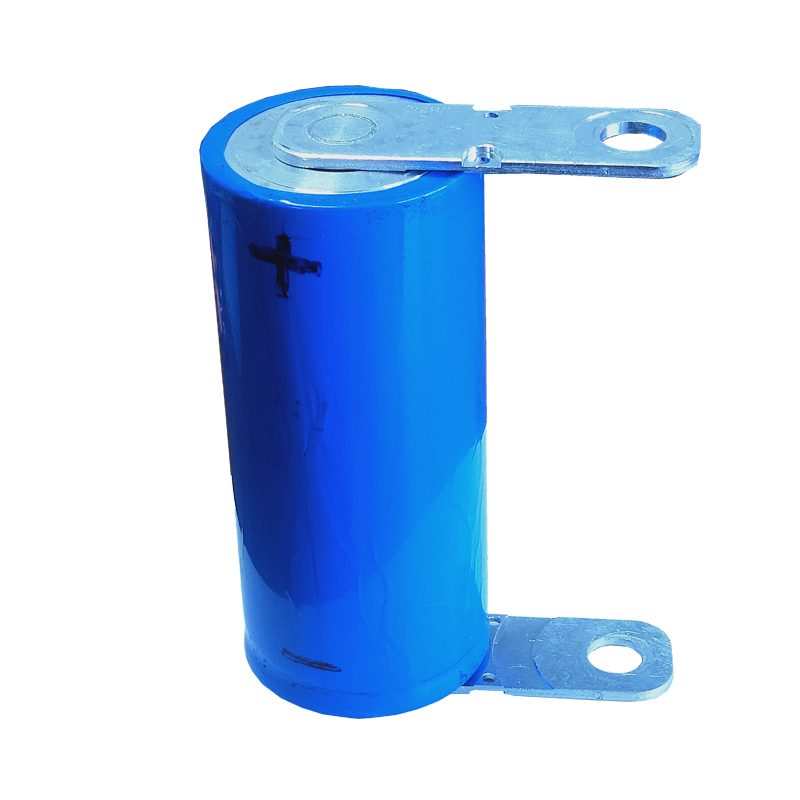

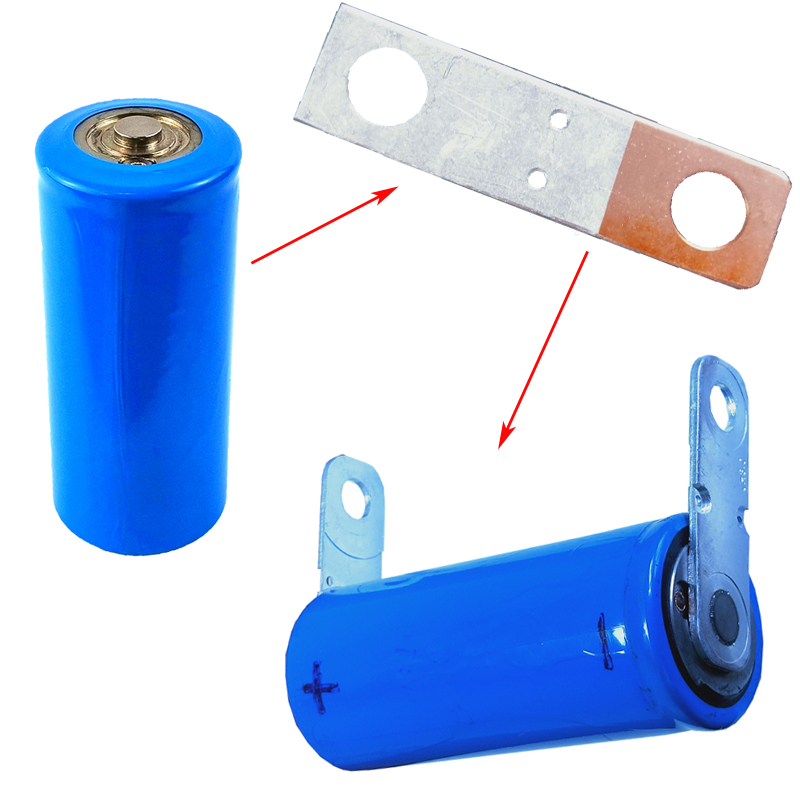
Product size:
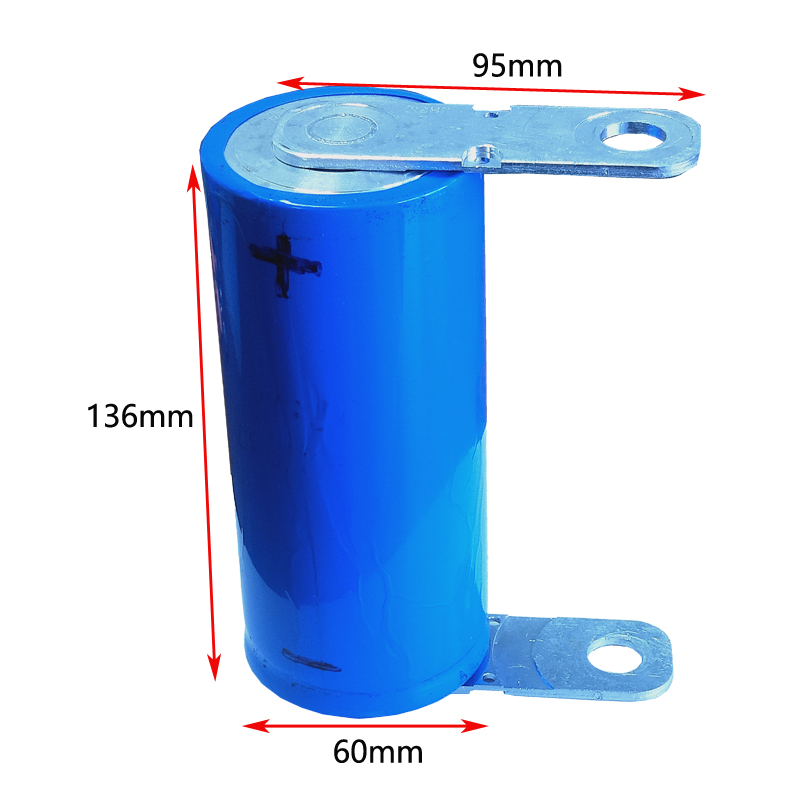
Product packaging:
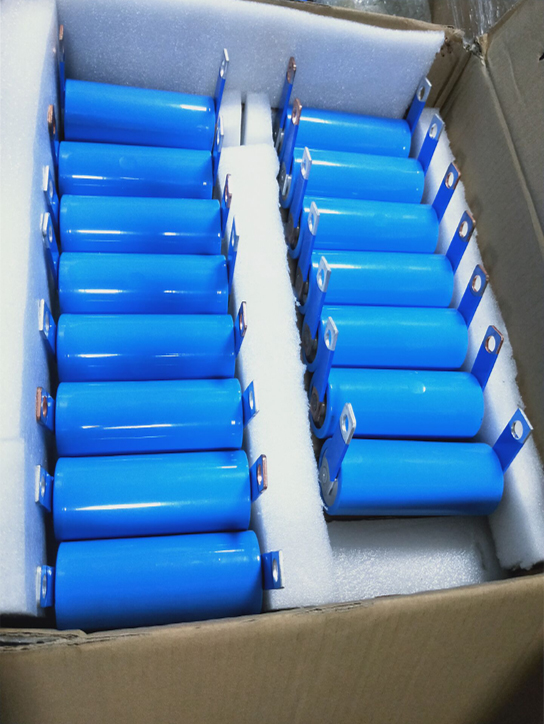
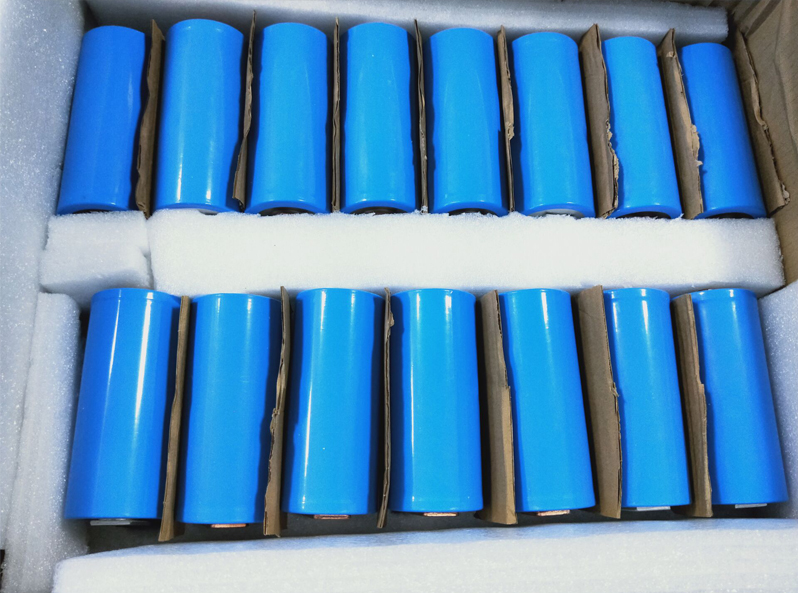
Comparison of capacity, voltage, and self discharge
The energy density of lithium-ion capacitors is lower than that of lithium-ion batteries, but the output density is high; The energy density of a single volume is 10-15Wh/L, which is much larger than the capacity of a double-layer capacitor of 2-8Wh/L, and is twice that of the latter.
In terms of voltage, lithium-ion capacitors can reach 4V, which is similar to lithium-ion batteries but much higher than double-layer capacitors. At the same time, they are smaller in terms of self discharge than both.
Security
The positive electrode of lithium-ion batteries, due to the use of lithium oxide, not only contains a large amount of lithium that can form lithium dendrites and penetrate the separator, but also contains oxygen, an important ignition element. Once a battery is short circuited, it can develop into a complete thermal decomposition, which can react with the electrolyte and cause combustion. The positive electrode of lithium-ion capacitors is activated carbon, and even if an internal short circuit reacts with the negative electrode, it will not react with the electrolyte. In theory, it will be much safer than lithium batteries.
Long lifespan
In order to achieve a long lifespan, lithium-ion batteries have certain range restrictions on their charging and discharging depth, which reduces the capacity that can be effectively utilized. The charging and discharging principle of double-layer capacitors is simply to adsorb or remove ions from the electrolyte, which makes it difficult to extend the actual lifespan. However, even if the positive electrode potential of lithium-ion capacitors is reduced, the voltage of the unit itself will not significantly decrease, thus ensuring capacity.
High temperature resistance
Under high temperature conditions, the electrolyte and positive electrode are prone to oxidation and decomposition. Therefore, it may be necessary to reduce the potential of the positive electrode under high temperature conditions. However, when the potential decreases, the overall voltage of the double-layer capacitor decreases, making it impossible to ensure capacity. However, lithium-ion batteries are unable to reduce voltage, which can easily lead to safety issues. Only lithium-ion capacitors can be used at positions where the positive electrode potential is far from the oxidation decomposition zone, resulting in excellent high-temperature performance.
Application and industrialization status of lithium-ion capacitors
The upstream of the lithium-ion capacitor industry mainly includes: positive and negative electrode raw materials, electrolytes, separators, perforated current collectors, and elemental metal lithium electrodes, etc; The midstream mainly includes various shapes and specifications of lithium-ion capacitor monomers, as well as modules integrated into lithium-ion capacitor monomer systems; Downstream is mainly the application demand of the terminal market. Currently, the Japanese market is preliminarily opening up, and it will then radiate in the international market, such as wind power generation, LED street lighting, solar power generation, and hybrid electric vehicles. Typical application areas: Suitable for power type power supply systems such as passenger car energy storage, passenger car start stop, smart grid, ports and heavy machinery, backup power, etc.
Low temperature discharge performance test:
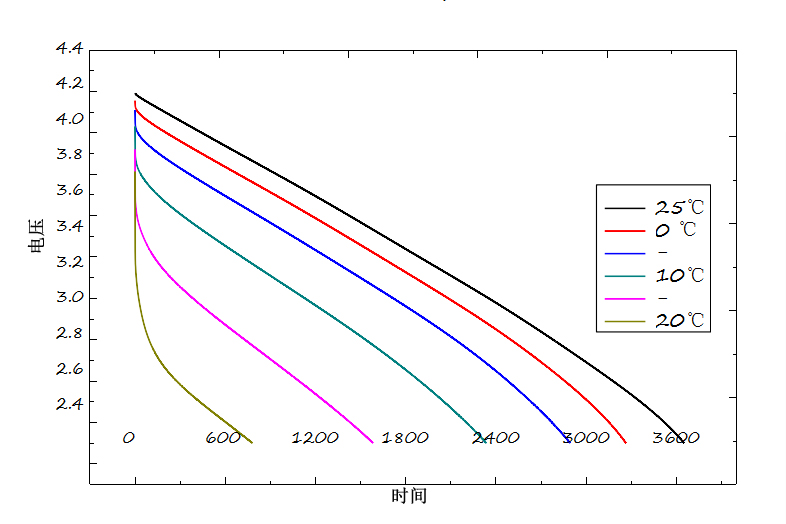
Charging and discharging performance testing:
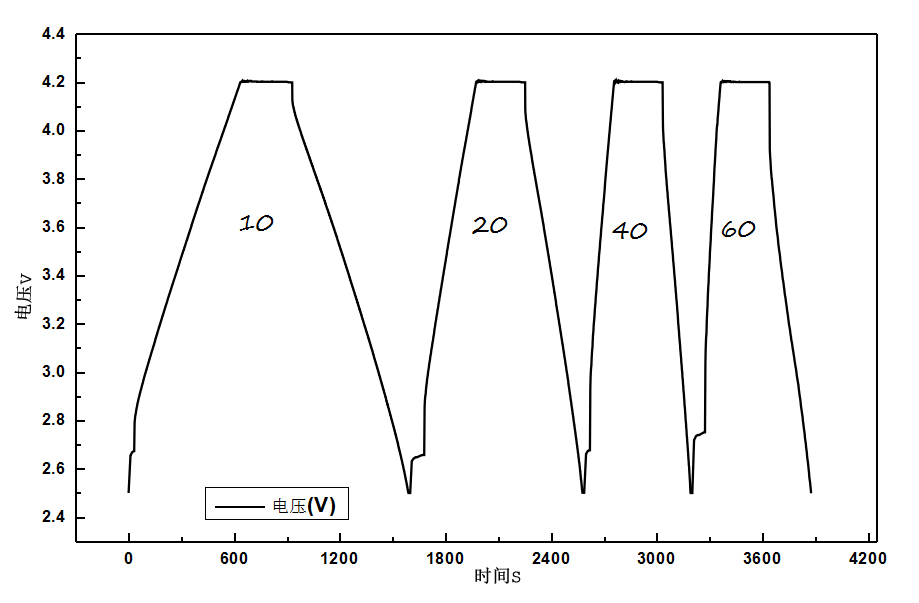
Discharge performance test:
